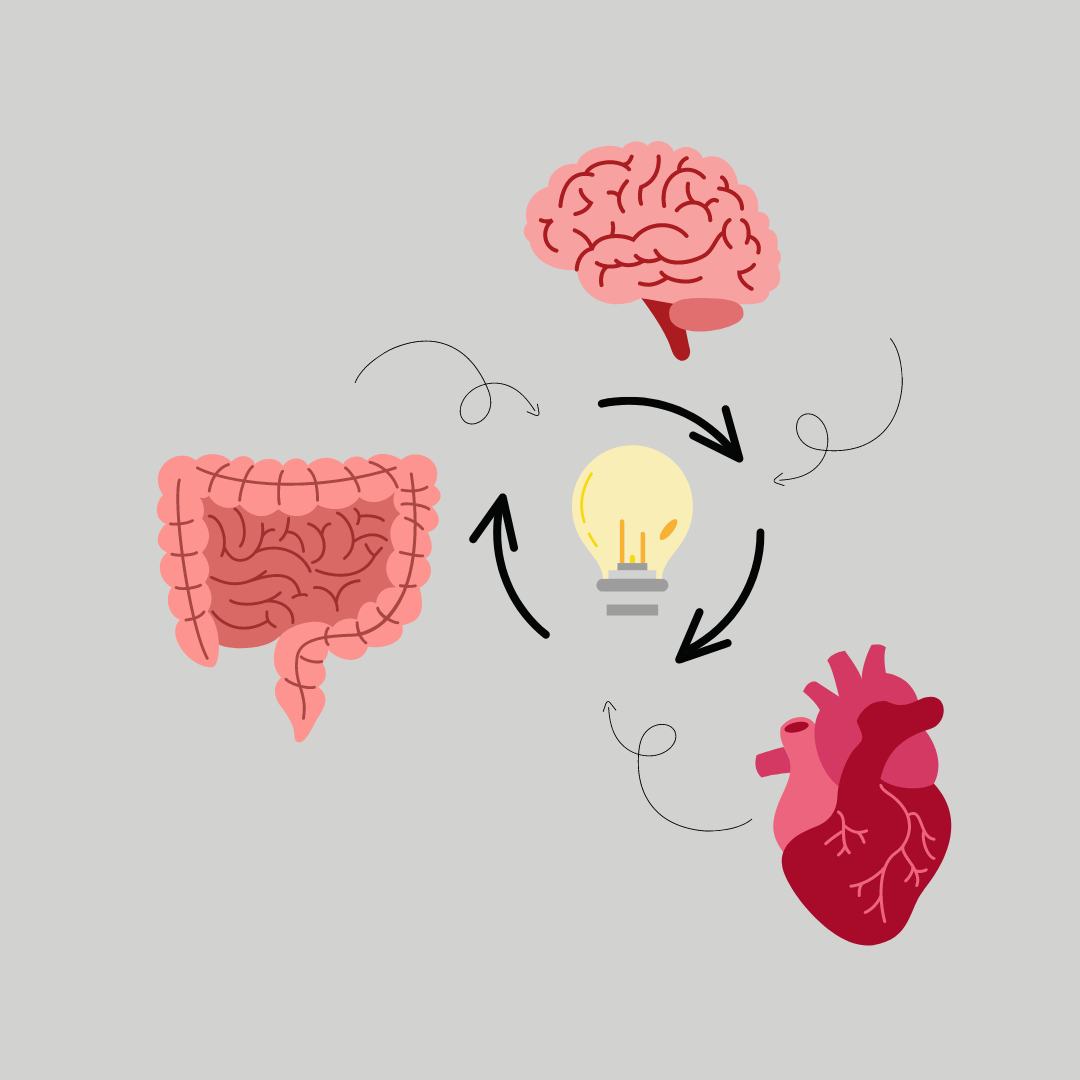
Our Three Connected Brains
Although only one organ in the head is anatomically known as the brain, there are two other crucial organs that allow us to communicate with ourselves and our environment in different but still important ways.
We are taught to “use our head” to make decisions, think logically and manoeuvre through life. But don’t we also rely on “following our heart” and “trusting our gut feelings” when it comes to those all-important decisions?
We can help ourselves to make the most informed decisions by consulting our head, heart and gut and better our chances of making choices that are aligned with our purpose, and which allow us to flow easier through challenging circumstances. This intelligence of knowing is multi-faceted and not only located in the head region.
All three brains share similarities in that they can independently process, store and access information when needed. Let’s take a look at each one in more detail.
Head (Cephalic) Brain
The most considered central processing unit of our functioning human nature has three main areas of function. The brainstem, which regulates all our autonomic vital life functions. The limbic system which facilitates our emotional processing and innate animal instincts. And the cortex which gives us the ability for awareness of consciously thinking. Our body is also constantly sending signals and instructions to our cephalic brain, communication goes both ways.
One important function of the cephalic brain is its remarkable ability to adapt and change, a phenomenon known as neuroplasticity.
Neuroplasticity refers to the brain’s capacity to reorganise itself by forming new neural connections throughout life. This process allows the brain to adapt to new experiences, so that we can navigate the complexities of a changing environment. Learn new skills which can promote cognitive health and recover from injuries, by reorganising its neural networks after injury or damage.
This also has profound implications for mental health, since interventions such as meditation and mindfulness practices can induce positive changes in the brain, promoting emotional resilience and well-being.
Gut (Enteric) Brain
There is a two-way communication system between the cephalic brain’s Central Nervous System and the Enteric Nervous System of the digestive system, known as the Gut-Brain Axis. It is a powerful connection that largely affects our mood and mental health and many other bodily functions.
In comparison to the 90 billion neurons in the head brain, the gut lining has approximately 500 billion neurons. A major nerve running from the head down through the gut and branching out to many vital organs is the vagus nerve. The vagus nerve is responsible for maintaining a balanced state throughout the body, and supports this network of communication.
The gut also produces 90% of a chemical neurotransmitter called serotonin. Serotonin is our feel-good hormone and helps regulate our mood. This chemical neurotransmitter communicates between the head and gut brain and helps us to understand how stress can impact gut function and vice versa, how a dysfunction of the gut can impact or cause mental health problems.
Heart (Cardiac) Brain
The heart and head brain communicate via the heart’s cardiac nervous system which contains approximately 40,000 neurons. This is once again a two-way communication system, with the help of the vagus nerve connecting the heart to the head brain and the rest of the body.
The head brain will send information regarding your body and environment to the heart, so it can adapt its functions accordingly. The heart will also send information to the head brain and our nervous system to evoke physiological and emotional changes.
The heart also projects an electromagnetic field, which is around 500 times stronger than the head brain’s electromagnetic field. It is thought it uses this electromagnetic field to communicate to the whole body. When the heart speaks, the body and cephalic brain listens.
Utilising our Three Brains Together
It’s all good and well knowing how the three brains are connected physically and chemically and how they interact with each other, but how does that benefit us when it comes to making big decisions.
It can be beneficial to meditate on a decision and when you are feeling deeply relaxed, check in on how the three brains feel about what you are mulling over. You can do this very simply by asking a specific question and then focussing your attention at the three separate areas in the body in turn. Start with focussing on your head, then your heart, then lastly your gut. Where your focus goes your energy goes, so feel into the sensations at each of those locations and pay attention to what arises. The feelings and sensations will offer feedback on how to proceed.
Oftentimes, something feels like a good idea when analysing it with our logical head brain. But when we check in with the heart and gut, it doesn’t always feel so good or certain. Listen to these signals because the body is always trying to communicate and guide us in the right direction.
If all three brains are feeling good, then that can inform the decision and which path to take. It’s not to say that you will never make a mistake again, but over time you will start to trust your three brains’ messages and be more confident in decision making.
Just starting with the awareness that there are three areas in the body that are designed to guide us, will help to take us out of our head and into our body. When we make decisions from an embodied state, we can better understand how beautifully connected human nature really is.


